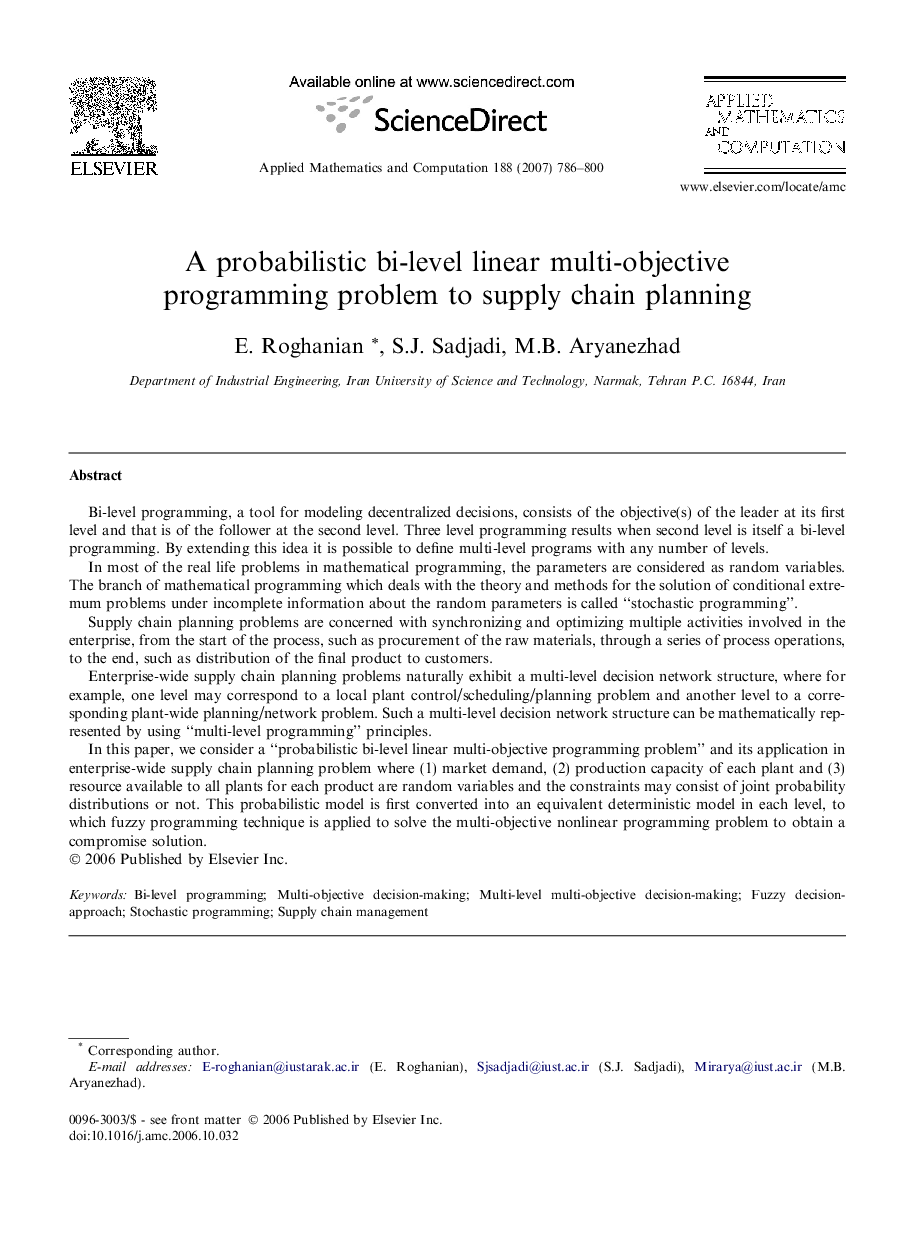| Article ID | Journal | Published Year | Pages | File Type |
|---|---|---|---|---|
| 4635238 | Applied Mathematics and Computation | 2007 | 15 Pages |
Bi-level programming, a tool for modeling decentralized decisions, consists of the objective(s) of the leader at its first level and that is of the follower at the second level. Three level programming results when second level is itself a bi-level programming. By extending this idea it is possible to define multi-level programs with any number of levels.In most of the real life problems in mathematical programming, the parameters are considered as random variables. The branch of mathematical programming which deals with the theory and methods for the solution of conditional extremum problems under incomplete information about the random parameters is called “stochastic programming”.Supply chain planning problems are concerned with synchronizing and optimizing multiple activities involved in the enterprise, from the start of the process, such as procurement of the raw materials, through a series of process operations, to the end, such as distribution of the final product to customers.Enterprise-wide supply chain planning problems naturally exhibit a multi-level decision network structure, where for example, one level may correspond to a local plant control/scheduling/planning problem and another level to a corresponding plant-wide planning/network problem. Such a multi-level decision network structure can be mathematically represented by using “multi-level programming” principles.In this paper, we consider a “probabilistic bi-level linear multi-objective programming problem” and its application in enterprise-wide supply chain planning problem where (1) market demand, (2) production capacity of each plant and (3) resource available to all plants for each product are random variables and the constraints may consist of joint probability distributions or not. This probabilistic model is first converted into an equivalent deterministic model in each level, to which fuzzy programming technique is applied to solve the multi-objective nonlinear programming problem to obtain a compromise solution.
